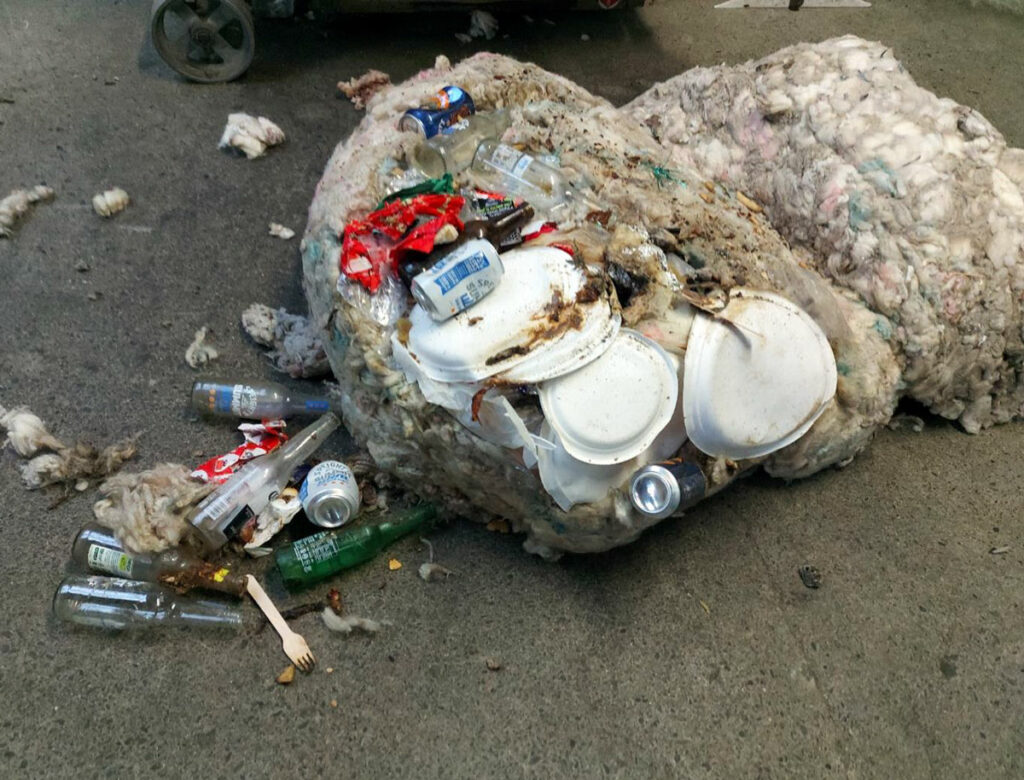Wool Bale Contamination Rising
NZWCA is backing the call for greater vigilance around wool bale contamination. We have created a Woolshed Checklist to help reduce the problem and raise awareness.
An alarming increase in the amount of content that’s not wool is being found in NZ wool bales by wool scourers, wool buyers, exporters and manufacturers locally and internationally.
The cost to our NZ wool industry is damaging financially and to this country’s reputation as a producer of quality wool. It has been suggested that low Crossbred wool prices are contributing to a quality complacency that undermines efforts to achieve higher prices.

The photo above was taken in a smaller South Island wool store, amongst wool that came in from a commercial mid-micron sheep and beef farm. The finder and photo-taker, and all the wool store staff who subsequently saw it and had to sort the mess said they were “totally bewildered as to how this could happen”. The finder wrote:
“It was a tightly packed fadge of 1/2bd raddle etc. While this an extreme case we every week find some kind of contamination. Very annoying, time wasting and costly. Our greatest fear is that we miss something that has major repercussions further up the process line.”
The NZ Wool Classers Association is throwing it’s weight behind the call to raise awareness of the problem and has come up with a checklist to remind wool growers and wool harvesting staff of practical measures to take to reduce the risk.
Says NZWCA Registrar Marg Forde:
“Our classer and grader members work mainly with Merino and Mid Micron wool and we are told the contamination is predominately in Crossbred wool bales. However, our association firmly advocates for quality wool preparation and education, so we are backing the call for greater vigilance and ringing the alarm bells too. We have created a checklist that we hope will be put up in every woolshed in the country, and that every wool grower and wool harvester reads.”
NZ’s only wool scouring company, WoolWorks, tracks wool bale contamination at their facilities and the data makes sobering reading. Between July and October this year 955 items that weren’t wool were discovered and documented in wool bales. They range from one tool to many rubber docking/tailing rings.
The finds include the following items:
- 223 plastic,
- 10 clothing,
- 36 wood,
- 80 metal,
- 37 press bars,
- 31 pieces of fabric and
- 54 rope/string.
Originally published in NZWCA Newsletter Dec 2023.
Posted January 16, 2024 by David.
